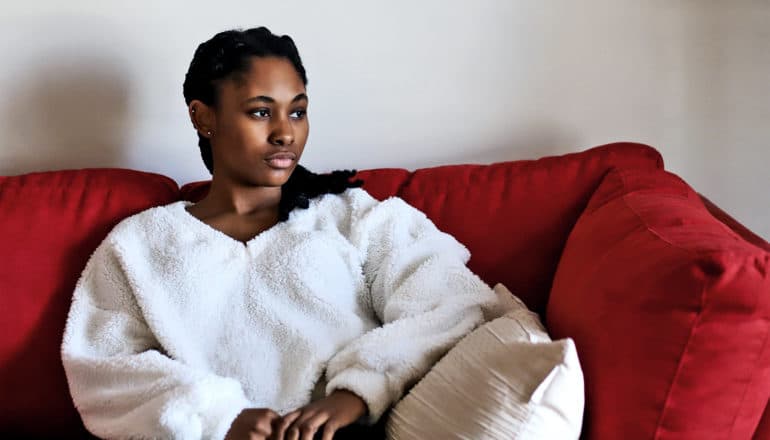
More than a quarter of American adults are experiencing COVID-related symptoms of depression, researchers report.
Though 8.5% of adults were experiencing depression symptoms before the pandemic, the rate climbed to 27.8% of adults by mid-April 2020.
“Depression in the general population after prior large-scale traumatic events has been observed to, at most, double,” says Sandro Galea, professor and dean in Boston University’s School of Public Health and senior author of the paper in JAMA Network Open.
He cites examples such as September 11, the West Africa Ebola outbreak, and recent civil unrest in Hong Kong.
Galea’s study, the first national study in the United States to assess the change in depression prevalence before and during COVID-19, used the Patient Health Questionnaire-9 (PHQ-9), the leading self-administered depression screening tool used by mental healthcare professionals.
The researchers compared data from 5,065 respondents to the 2017-2018 National Health and Nutrition Examination Survey (NHANES), and 1,441 respondents from the COVID-19 Life Stressors Impact on Mental Health and Well-Being (CLIMB) study, conducted from March 31 to April 13, 2020. At that time 96% of the US population was under stay-at-home advisories or shelter-in-place policies.
Both surveys used the PHQ-9 to assess depression symptoms and gathered the same baseline of demographic data. The 2020 survey also gathered data on COVID-related stressors, including job loss, the death of a friend or loved one from COVID-19, and financial problems. Experiencing more COVID-related stressors was a major predictor of depression symptoms.
Across the board, the researchers found an increase in depression symptoms among all demographic groups. But the biggest difference in depression rates among demographics came down to a person’s finances.
After adjusting for all other factors, the researchers found that, since the onset of the coronavirus pandemic, someone with less than $5,000 in savings was 50% more likely to have depression symptoms than someone with more than $5,000.
“Persons who were already at risk before COVID-19, with fewer social and economic resources, were more likely to report probable depression,” suggesting that inequity has increased during this time and that health gaps have widened, says lead author Catherine Ettman, a doctoral student at the Brown University School of Public Health and director of strategic development at the School of Public Health Office of the Dean.
The findings underline the importance of working to build a society “where a robust safety net exists, where people have fair wages, where equitable policies and practices exist, and where families can not only live on their income, but can also save money towards the future,” Ettman says.
As COVID-19 continues to grip the country, she says, “there may be steps that policymakers can take now to help reduce the impact of COVID-19 stressors on depression, such as eviction moratoria, providing universal health insurance that is not tied to employment, and helping people return to work safely for those able to do so.”
At the same time, Ettman says she and her colleagues hope the study findings will also help those who are experiencing depression in this incredibly difficult time see that they are not alone: on the contrary, one in four US adults is going through the same thing.
The Rockefeller Foundation–Boston University 3-D Commission and the National Institutes of Health funded the study.
Source: Boston University
The post More than 25% of Americans face depression during COVID appeared first on Futurity.
from Futurity https://ift.tt/3h1llEB
No comments:
Post a Comment